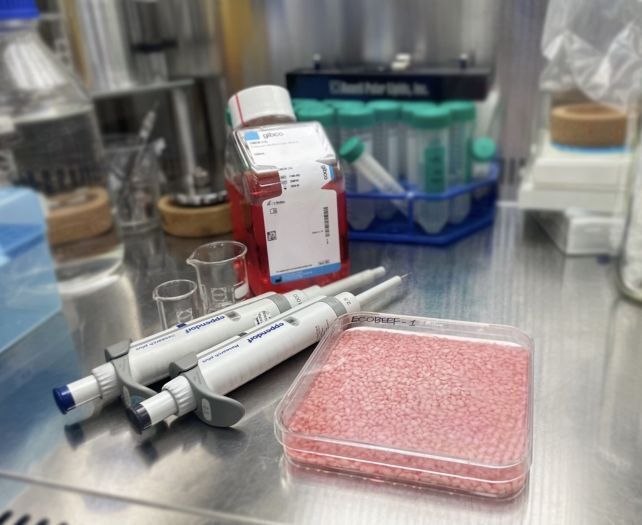News
Scientists have grown veal inside rice grains: why it can be a real breakthrough
Korean scientists have recently developed a new method of growing meat in the laboratory using an innovative approach. They created a new product that consists of bovine fat cells and muscle grown in rice grains.
This meat resembles a strange combination of minced meat and rice, pink sticky grains. This is reported by Science Alert.
According to the team, led by biomolecular engineer Seohyeon Park of Yonsei University, the mixture is rich in nutrients, and although its production is currently difficult, it could help ease pressure on the food market in the future.
"Imagine that we get all the nutrients we need from cell cultured protein rice. Rice already has a high level of nutrients, but adding livestock cells can boost it even further," says Park.
Rice is about 80 percent starch, with the remaining 20 percent made up of proteins and other nutrients. Although rice is already a great food, scientists have looked at the possibility of enriching its nutritional value.
In biological systems, cells need a scaffold to help form tissue as it grows. In the laboratory, scientists often use an artificial scaffold to grow various tissues and organs. Park and her colleagues hypothesized that rice, which has a porous structure, could serve the same function by creating a scaffold on which animal cells grown in the laboratory can grow into tissue.
First, they treated the rice grains with food-grade fish gelatin and enzymes to facilitate cell attachment and increase the amount of cellular material that could adhere to and grow on the rice. They then seeded the rice grains with bovine muscle and adipose stem cells and let them grow in a petri dish for 9-11 days.
After the cultivation period, the researchers analyzed the structure and nutritional composition of the rice. They found that the beef and rice hybrid was both harder and more brittle than regular rice.
What was significant was how the nutritional profile of the rice changed. The hybrid rice had significantly higher protein and fat content - 8 percent more protein and 7 percent more fat - than unprocessed rice. This may not seem like much, but even greater changes can be made in the future. In addition, rice meat production would be more economical than beef production, both in terms of emissions and cost.
The team calculated that hybrid rice production produces 6.27 kilograms of carbon dioxide for every 100 grams of protein. In comparison, beef produces 49.89 kilograms of carbon dioxide for every 100 grams of protein. And the cost of hybrid rice for the consumer will be about 15 percent of the price of beef per kilogram.
Changes in the flavor profile of rice can also be interesting. The team found that beef muscle and fat give rice different flavors that chefs might be interested in experimenting with.
The scientists now plan to improve the production process to reduce the time it takes to make hybrid rice. The team may also conduct experiments to maximize the absorption of cellular material by rice grains, which have proven to be particularly suitable for this process.
"I didn't expect cells to grow so well in rice. Now I see a whole world of possibilities for this hybrid grain-based food. One day, it could serve as food aid during famine, military rations, or even space food," Park said.
Scientists believe that this method of growing meat in a biolab can help reduce the negative impact on the environment. As the growth of the world's population leads to an increase in the burden on nature, food production, in particular the large areas of land and water resources needed to keep livestock, is one of the main factors in this burden.
Earlier it was reported that the American neurotechnology company Neuralink, founded by billionaire Elon Musk, has implanted a wireless chip into the human brain for the first time. Researchers have been working on the chip for a long time, including testing the high-tech implant on animals.
Only verified information is available on the OBOZ.UA Telegram channel and Viber. Do not fall for fakes!




























